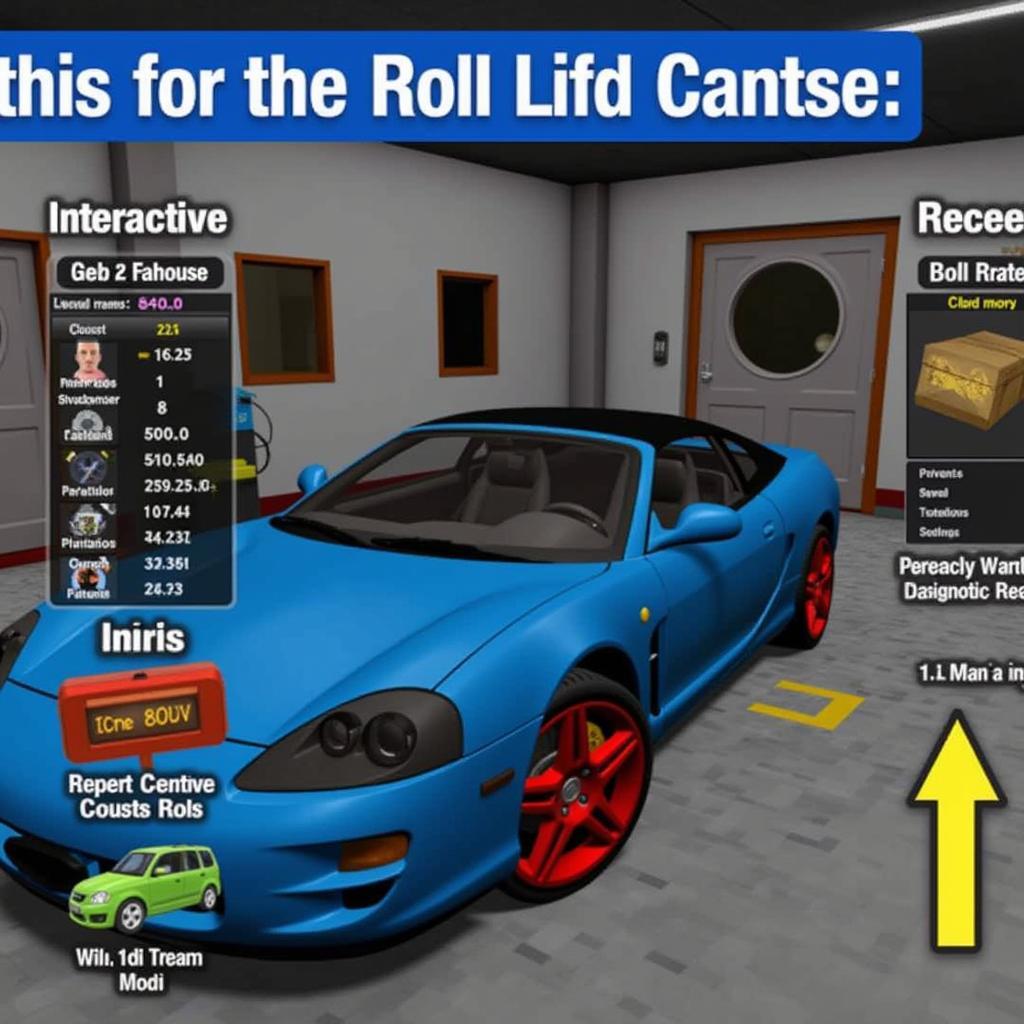The world of auto repair is no longer confined to greasy workshops and hands-on experience. Enter “virtual car repair simulators,” sophisticated software designed to replicate real-world car troubles in a risk-free digital environment. These platforms are changing the game for aspiring mechanics, seasoned professionals, and even curious car enthusiasts. But with a vast array of options available, navigating the world of virtual wrenches can feel overwhelming. This comprehensive guide delves into the exciting realm of virtual car repair simulators, equipping you with the knowledge to choose the right platform and maximize your learning experience.
Why Choose Virtual Car Repair Simulators?
The allure of virtual car repair simulators extends far beyond mere entertainment. They offer a unique blend of education and engagement, appealing to a diverse audience:
-
Aspiring Mechanics: For those eager to delve into the intricacies of car repair, virtual simulators provide a safe and controlled space to learn the ropes. You can dismantle engines, troubleshoot electrical systems, and experiment with repair techniques – all without the fear of real-world consequences.
-
Seasoned Professionals: Even experienced mechanics can benefit from the virtual garage. These platforms provide a space to refine skills, stay updated on the latest automotive technologies, and practice complex repairs on a variety of car models.
-
Car Enthusiasts: If you’re someone who enjoys tinkering under the hood, virtual simulators offer an engaging way to deepen your understanding of how cars work. You can explore different car systems, experiment with modifications, and troubleshoot common car problems.
Navigating the Virtual Garage: Types of Simulators
Virtual car repair simulators cater to a wide range of needs and skill levels. Let’s break down the most common types:
1. Game-Based Simulators:
These platforms, often found on gaming platforms like Roblox, offer a fun and accessible entry point into the world of car repair. While they may not delve into the complexities of real-world mechanics, they provide a basic understanding of car components and repair processes.
2. Educational Simulators:
Designed specifically for learning, these simulators prioritize realism and accuracy. They often include detailed car models, realistic physics engines, and comprehensive diagnostic tools. Educational simulators are ideal for aspiring mechanics and those seeking in-depth knowledge.
3. Professional-Grade Simulators:
Utilized by automotive training institutions and manufacturers, these high-end simulators offer the most realistic and immersive experience. They often feature haptic feedback systems, life-sized car models, and advanced diagnostic software, mirroring the complexities of real-world repair.
Choosing the Right Simulator: Factors to Consider
With a plethora of options available, selecting the right virtual car repair simulator depends on your specific needs and goals:
-
Realism: How important is it for the simulator to accurately reflect real-world car mechanics and repair procedures?
-
Complexity: Are you looking for a basic introduction or a deep dive into advanced repair techniques?
-
Car Models: Does the simulator offer a wide range of car models to choose from?
-
Features: What specific features are you looking for, such as diagnostic tools, interactive tutorials, or multiplayer modes?
-
Platform: Is the simulator compatible with your preferred gaming platform or device?
Beyond the Virtual Garage: Real-World Applications
Virtual car repair simulators are not merely confined to the digital realm; they offer tangible benefits that translate to real-world scenarios:
-
Enhanced Problem-Solving Skills: Simulators challenge users to diagnose and repair virtual car problems, fostering critical thinking and analytical skills essential for real-world mechanics.
-
Reduced Risk and Cost: In the virtual world, mistakes are learning opportunities. Simulators eliminate the risk of damaging real car parts or injuring yourself, making them a cost-effective training tool.
-
Accelerated Learning Curve: Virtual simulators allow users to repeat procedures, rewind steps, and access helpful resources, facilitating faster and more efficient learning compared to traditional hands-on training.
The Future of Car Repair: Virtual Reality and Beyond
As technology continues to advance, the future of virtual car repair simulators looks promising. Emerging technologies like virtual reality (VR) and augmented reality (AR) are poised to revolutionize the way we learn and interact with car mechanics:
-
Immersive Learning Environments: VR headsets can transport users into incredibly realistic virtual garages, providing a truly immersive and engaging learning experience.
-
Hands-on Training with AR: Augmented reality overlays digital information onto the real world. Imagine wearing AR glasses that highlight specific car components, display repair instructions, and provide real-time feedback as you work.
Conclusion
Virtual car repair simulators have emerged as powerful tools for anyone seeking to understand, learn, or master the intricacies of car mechanics. Whether you’re an aspiring mechanic, a seasoned professional, or simply a car enthusiast, the virtual garage offers a unique blend of education, engagement, and hands-on experience – all from the comfort of your own screen. As technology continues to evolve, we can expect even more innovative and immersive virtual car repair experiences in the years to come.


